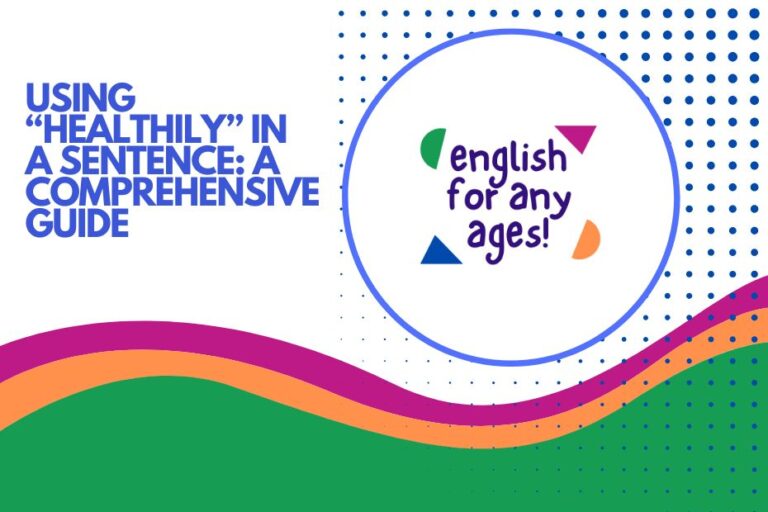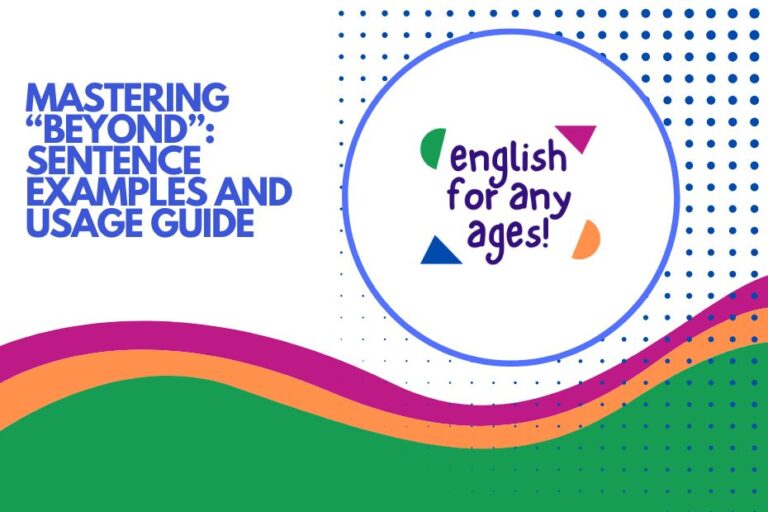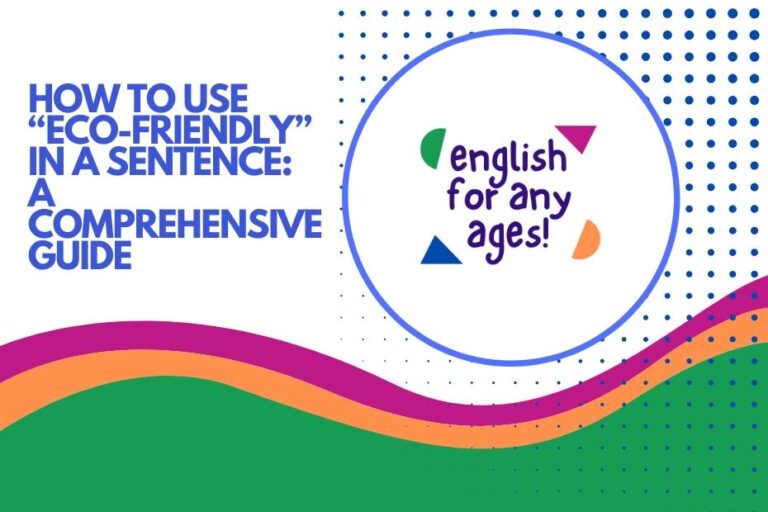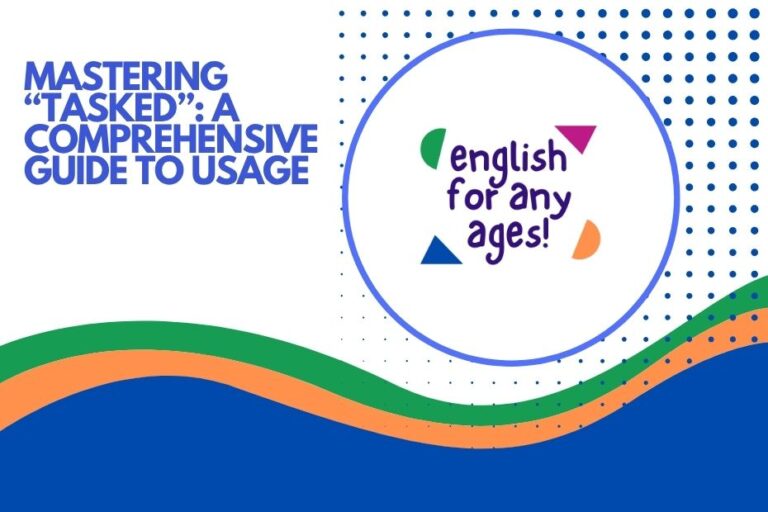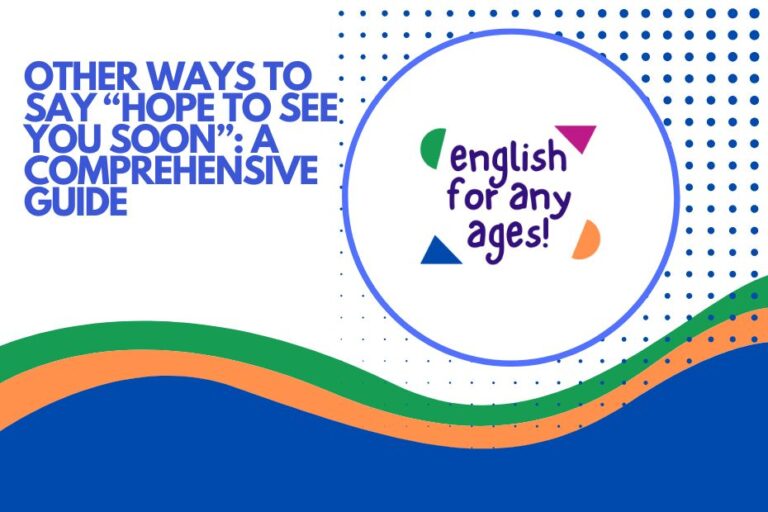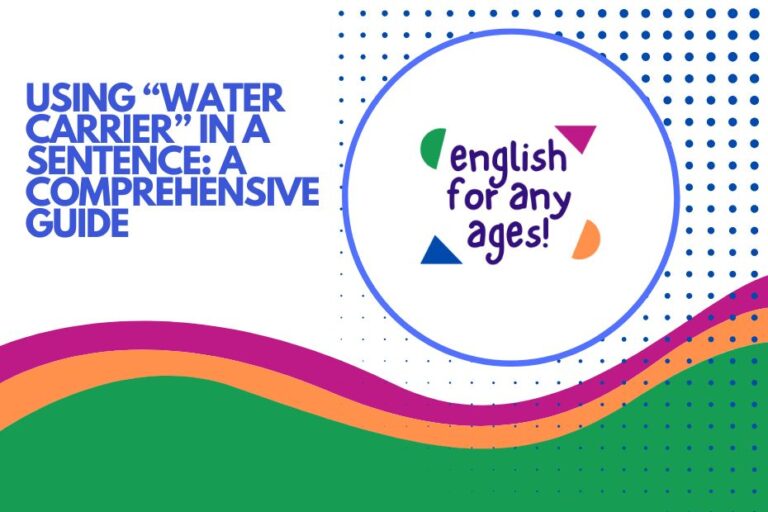Mastering “Alongside”: Sentence Examples & Usage Guide
Understanding how to use prepositions correctly is crucial for clear and effective communication in English. The preposition “alongside” is a valuable tool for expressing spatial relationships, support, and comparison.
This article provides a comprehensive guide to using “alongside,” complete with definitions, examples, usage rules, common mistakes, and practice exercises. Whether you’re a beginner or an advanced learner, this guide will help you confidently incorporate “alongside” into your vocabulary and writing.
This article is designed for English language learners of all levels, from beginners who are just starting to grasp the basics of prepositions to advanced learners who want to refine their understanding and usage. Native English speakers can also benefit from this comprehensive overview, which clarifies common misconceptions and provides a structured approach to mastering “alongside.”
Table of Contents
- Definition of “Alongside”
- Structural Breakdown
- Types and Categories of Usage
- Examples of “Alongside” in Sentences
- Usage Rules for “Alongside”
- Common Mistakes Using “Alongside”
- Practice Exercises
- Advanced Topics
- Frequently Asked Questions (FAQ)
- Conclusion
Definition of “Alongside”
“Alongside” is a preposition that primarily indicates a position next to something or someone. It can also convey a sense of support, partnership, or comparison.
Understanding its nuances is key to using it effectively.
Classification: “Alongside” is classified as a preposition of place, but its meaning extends beyond simple location to include ideas of cooperation and similarity.
Function: The primary function of “alongside” is to show the spatial relationship between two or more entities. It can also function to indicate that two things are developing or progressing together.
Contexts: “Alongside” is used in a variety of contexts, including:
- Describing physical locations (e.g., “The boat docked alongside the pier.”)
- Expressing support or cooperation (e.g., “She worked alongside her colleagues on the project.”)
- Indicating comparison or similarity (e.g., “Alongside traditional methods, they introduced new technologies.”)
- Describing simultaneous actions (e.g., “He walked alongside the river.”)
Structural Breakdown
The basic structure involving “alongside” is typically:
Noun/Pronoun + Verb + Alongside + Noun/Pronoun
For example:
- The child walked alongside his mother.
- She stood alongside him during the ceremony.
- We developed the new software alongside the existing system.
Sometimes, “alongside” can function more like an adverbial phrase, modifying the verb by adding contextual information about location or manner.
Example: The ship sailed alongside, maintaining a steady pace.
The prepositional phrase “alongside” can also be placed at the beginning of a sentence, though this is less common and often used for emphasis.
Example: Alongside the main road, there is a smaller, less traveled path.
Types and Categories of Usage
The preposition “alongside” can be categorized based on the specific meaning it conveys in a sentence. Here are the primary categories:
Spatial Relationships
This is the most literal use of “alongside,” indicating physical proximity. It describes the position of one thing next to another.
Support and Solidarity
In this context, “alongside” suggests that someone or something is providing support or working in cooperation with another.
Comparison and Contrast
Here, “alongside” is used to compare or contrast two or more things, often implying that they exist or are considered together.
Simultaneous Action
This usage indicates that two actions are happening at the same time and in proximity to each other, either literally or figuratively.
Figurative Usage
In a figurative sense, “alongside” can be used to describe abstract concepts or relationships that are not necessarily physical.
Examples of “Alongside” in Sentences
The following examples illustrate the various ways “alongside” can be used in sentences. Each category is presented with a table containing multiple examples.
Spatial Relationships
These examples demonstrate the use of “alongside” to describe the physical location of one thing in relation to another. The preposition indicates that the objects or people are situated next to each other.
| # | Sentence Example |
|---|---|
| 1 | The car parked alongside the curb. |
| 2 | The bicycle leaned alongside the wall. |
| 3 | The river flowed alongside the forest. |
| 4 | The new building was constructed alongside the old one. |
| 5 | The children walked alongside the beach. |
| 6 | The train tracks ran alongside the highway. |
| 7 | The garden path stretched alongside the flower beds. |
| 8 | The small boat sailed alongside the larger ship. |
| 9 | The protesters stood alongside the barricades. |
| 10 | The café is located alongside the bookstore. |
| 11 | He sat alongside me on the bus. |
| 12 | The sculpture was placed alongside the fountain. |
| 13 | The dog trotted alongside its owner. |
| 14 | The runner kept pace alongside the leader. |
| 15 | The stream meandered alongside the meadow. |
| 16 | New apartments were built alongside the existing community. |
| 17 | The farmer planted trees alongside the field. |
| 18 | The security guard patrolled alongside the perimeter. |
| 19 | A narrow path ran alongside the cliff edge. |
| 20 | The artist displayed her paintings alongside those of her mentor. |
| 21 | The construction crew worked alongside the existing railway line. |
| 22 | The hiking trail follows alongside the mountain range. |
| 23 | The emergency lane is located alongside the highway. |
| 24 | The two countries share a border that runs alongside the river. |
| 25 | The new bike lane runs alongside the main road. |
Support and Solidarity
These sentences illustrate how “alongside” is used to convey a sense of support, partnership, or cooperation. The preposition suggests that individuals or groups are working together towards a common goal or standing together in solidarity.
| # | Sentence Example |
|---|---|
| 1 | She stood alongside her friend during the difficult time. |
| 2 | The community worked alongside the charity to rebuild the town. |
| 3 | The volunteers labored alongside the medical staff to provide aid. |
| 4 | The company partnered alongside the local school to offer internships. |
| 5 | The activists protested alongside each other for social justice. |
| 6 | The team members collaborated alongside their leader to achieve success. |
| 7 | The government worked alongside international organizations to address the crisis. |
| 8 | The students studied alongside their tutor to improve their grades. |
| 9 | The family supported each other, standing alongside one another through thick and thin. |
| 10 | The nations allied alongside each other to maintain peace. |
| 11 | The lawyers worked alongside the victims to seek justice. |
| 12 | The engineers collaborated alongside the architects to design the bridge. |
| 13 | The researchers worked alongside the scientists to conduct the experiment. |
| 14 | The artists created the mural alongside the community members. |
| 15 | The doctors treated the patients alongside the nurses. |
| 16 | The soldiers fought alongside their comrades. |
| 17 | The teachers mentored the students alongside their parents. |
| 18 | The mentors guided the mentees alongside the program coordinators. |
| 19 | The counselors supported the clients alongside their families. |
| 20 | The allies stood alongside each other in the face of adversity. |
| 21 | The community rallied alongside the family after their loss. |
| 22 | The colleagues supported her, standing alongside her during her presentation. |
| 23 | The company invested in training, working alongside employees to enhance their skills. |
| 24 | The organization campaigned alongside local residents to improve their neighborhood. |
| 25 | The medical team collaborated alongside international experts during the outbreak. |
Comparison and Contrast
These examples show how “alongside” is used to compare or contrast two or more things. It often implies that the compared items exist or are considered together, highlighting similarities or differences.
| # | Sentence Example |
|---|---|
| 1 | Alongside traditional methods, they introduced new technologies. |
| 2 | Alongside the main course, they served a delicious salad. |
| 3 | Alongside his regular job, he also worked as a freelancer. |
| 4 | Alongside the expected benefits, there were also some unexpected challenges. |
| 5 | Alongside the established artists, the exhibition featured emerging talents. |
| 6 | Alongside the written exam, there was also a practical assessment. |
| 7 | Alongside the positive reviews, there were also some criticisms. |
| 8 | Alongside her academic achievements, she was also an accomplished athlete. |
| 9 | Alongside the financial rewards, the job offered opportunities for personal growth. |
| 10 | Alongside the environmental concerns, there were also economic considerations. |
| 11 | Alongside the standard curriculum, they offered specialized courses. |
| 12 | Alongside the local cuisine, they also served international dishes. |
| 13 | Alongside the historical monuments, the city also boasted modern architecture. |
| 14 | Alongside the experienced staff, they hired new graduates. |
| 15 | Alongside the indoor activities, they also enjoyed outdoor adventures. |
| 16 | Alongside the planned events, there were also spontaneous gatherings. |
| 17 | Alongside the theoretical knowledge, they gained practical experience. |
| 18 | Alongside the original plan, they developed contingency strategies. |
| 19 | Alongside the traditional music, they also enjoyed contemporary genres. |
| 20 | Alongside the formal attire, they also wore casual clothing. |
| 21 | Alongside the scheduled meetings, there were also informal discussions. |
| 22 | Alongside the core subjects, they studied elective courses. |
| 23 | Alongside the mandatory requirements, they fulfilled optional assignments. |
| 24 | Alongside the primary objectives, they pursued secondary goals. |
| 25 | Alongside the main responsibilities, they handled additional tasks. |
Simultaneous Action
These examples demonstrate how “alongside” can be used to describe actions occurring at the same time and in proximity to each other, either literally or figuratively, emphasizing the concurrent nature of the events.
| # | Sentence Example |
|---|---|
| 1 | He walked alongside the river, lost in thought. |
| 2 | She sang alongside playing the guitar. |
| 3 | They danced alongside celebrating the victory. |
| 4 | The children laughed alongside playing in the park. |
| 5 | The birds flew alongside migrating south for the winter. |
| 6 | The athletes trained alongside preparing for the Olympics. |
| 7 | The students studied alongside preparing for their exams. |
| 8 | The chefs cooked alongside preparing the banquet. |
| 9 | The artists painted alongside creating their masterpieces. |
| 10 | The writers wrote alongside crafting their novels. |
| 11 | The programmers coded alongside developing the software. |
| 12 | The engineers designed alongside building the infrastructure. |
| 13 | The doctors treated patients alongside conducting research. |
| 14 | The teachers taught alongside mentoring students. |
| 15 | The volunteers helped alongside organizing the event. |
| 16 | The musicians played alongside composing new music. |
| 17 | The actors performed alongside rehearsing their lines. |
| 18 | The dancers practiced alongside choreographing new routines. |
| 19 | The scientists experimented alongside analyzing the data. |
| 20 | The entrepreneurs built their businesses alongside managing their finances. |
| 21 | The gardeners planted flowers alongside tending to the vegetables. |
| 22 | The construction workers built the houses alongside landscaping the yards. |
| 23 | The bakers baked bread alongside decorating cakes. |
| 24 | The mechanics repaired cars alongside diagnosing problems. |
| 25 | The librarians cataloged books alongside assisting readers. |
Figurative Usage
In a figurative sense, “alongside” can describe abstract concepts or relationships that are not necessarily physical, extending its meaning beyond literal proximity to encompass metaphorical connections.
| # | Sentence Example |
|---|---|
| 1 | He placed ambition alongside integrity in his list of values. |
| 2 | She considered creativity alongside practicality when planning the project. |
| 3 | They weighed the risks alongside the rewards before making the decision. |
| 4 | The company promoted innovation alongside tradition in its corporate culture. |
| 5 | The philosopher explored morality alongside ethics in his writings. |
| 6 | The politician emphasized unity alongside diversity in his speeches. |
| 7 | The artist juxtaposed beauty alongside decay in her paintings. |
| 8 | The writer wove humor alongside tragedy in his stories. |
| 9 | The scientist studied cause alongside effect in his experiments. |
| 10 | The educator taught knowledge alongside wisdom in her lessons. |
| 11 | The leader balanced authority alongside empathy in his leadership style. |
| 12 | The negotiator considered compromise alongside principle in the negotiations. |
| 13 | The judge weighed justice alongside mercy in the sentencing. |
| 14 | The therapist explored past experiences alongside present emotions in the sessions. |
| 15 | The coach developed discipline alongside motivation in his athletes. |
| 16 | The manager fostered collaboration alongside competition in his team. |
| 17 | The parent nurtured independence alongside responsibility in her children. |
| 18 | The mentor cultivated confidence alongside humility in his mentees. |
| 19 | The community valued progress alongside preservation in its development plans. |
| 20 | The society promoted freedom alongside order in its laws. |
| 21 | He balanced ambition alongside contentment in his life. |
| 22 | She pursued success alongside fulfillment in her career. |
| 23 | They sought happiness alongside purpose in their relationships. |
| 24 | The organization advocated for equality alongside justice in its mission. |
| 25 | The movement championed peace alongside security in its goals. |
Usage Rules for “Alongside”
Using “alongside” correctly involves understanding certain rules and guidelines. Here’s a breakdown:
- Spatial Proximity: Ensure that the entities you are describing with “alongside” are actually in close physical proximity.
- Contextual Relevance: The context should make it clear whether you are referring to physical location, support, or comparison.
- Avoid Redundancy: Don’t use “alongside” when a simpler preposition like “next to” or “beside” will suffice, unless you specifically want to convey the additional meaning of support or comparison.
- Clarity: Make sure the sentence is clear and unambiguous. The relationship between the elements connected by “alongside” should be easily understood.
- Formal vs. Informal: “Alongside” is suitable for both formal and informal contexts.
Common Mistakes Using “Alongside”
Even experienced English speakers can make mistakes with prepositions. Here are some common errors to avoid when using “alongside”:
| Incorrect | Correct | Explanation |
|---|---|---|
| The cat sat near alongside the window. | The cat sat alongside the window. | “Near” is redundant with “alongside” in this context. |
| She worked with alongside her team. | She worked alongside her team. | “With” is unnecessary, as “alongside” already implies collaboration. |
| Alongside of the road, there was a ditch. | Alongside the road, there was a ditch. | “Of” is superfluous after “alongside.” |
| The book was beside alongside the lamp. | The book was alongside the lamp. | “Beside” is redundant, as “alongside” sufficiently indicates proximity. |
| He stood close alongside her. | He stood alongside her. | “Close” is redundant; “alongside” already implies nearness. |
Practice Exercises
Test your understanding of “alongside” with these practice exercises. Choose the correct sentence or fill in the blank with the appropriate word.
Exercise 1: Multiple Choice
Choose the sentence that correctly uses “alongside.”
| # | Question | Options | Answer |
|---|---|---|---|
| 1 | Which sentence is correct? | a) He parked the car near alongside the building. b) He parked the car alongside the building. c) He parked the car near the alongside building. | b) He parked the car alongside the building. |
| 2 | Which sentence is correct? | a) The river flowed alongside of the mountains. b) The river flowed alongside the mountains. c) The river flowed beside alongside the mountains. | b) The river flowed alongside the mountains. |
| 3 | Which sentence is correct? | a) She worked with alongside her colleagues. b) She worked alongside her colleagues. c) She worked with her alongside colleagues. | b) She worked alongside her colleagues. |
| 4 | Which sentence is correct? | a) Alongside of the main course, there was salad. b) Alongside the main course, there was salad. c) Alongside to the main course, there was salad. | b) Alongside the main course, there was salad. |
| 5 | Which sentence is correct? | a) The child walked close alongside his father. b) The child walked closely alongside his father. c) The child walked alongside his father. | c) The child walked alongside his father. |
| 6 | Which sentence is correct? | a) She stood near alongside the stage. b) She stood alongside the stage. c) She stood nearly alongside the stage. | b) She stood alongside the stage. |
| 7 | Which sentence is correct? | a) The new software was developed alongside of the old one. b) The new software was developed alongside the old one. c) The new software was developed beside alongside the old one. | b) The new software was developed alongside the old one. |
| 8 | Which sentence is correct? | a) The protesters stood close alongside the barricades. b) The protesters stood alongside the barricades. c) The protesters stood closely alongside the barricades. | b) The protesters stood alongside the barricades. |
| 9 | Which sentence is correct? | a) The boat sailed near alongside the shore. b) The boat sailed alongside the shore. c) The boat sailed nearly alongside the shore. | b) The boat sailed alongside the shore. |
| 10 | Which sentence is correct? | a) Alongside to the academic subjects, they also studied arts. b) Alongside of the academic subjects, they also studied arts. c) Alongside the academic subjects, they also studied arts. | c) Alongside the academic subjects, they also studied arts. |
Exercise 2: Fill in the Blanks
Fill in the blank with “alongside” to complete the sentences.
| # | Question | Answer |
|---|---|---|
| 1 | The new apartments were built ______ the existing community. | alongside |
| 2 | She worked ______ her mentor on the project. | alongside |
| 3 | ______ the main road, there is a small path. | Alongside |
| 4 | The stream meandered ______ the meadow. | alongside |
| 5 | The ship docked ______ the pier. | alongside |
| 6 | The runner kept pace ______ the leader. | alongside |
| 7 | They developed the product ______ the existing system. | alongside |
| 8 | The soldiers fought ______ their comrades. | alongside |
| 9 | The doctors worked ______ the nurses. | alongside |
| 10 | The activists protested ______ each other. | alongside |
Advanced Topics
For advanced learners, consider these more complex aspects of using “alongside”:
- Nuances of Meaning: Explore the subtle differences between “alongside” and other similar prepositions like “beside,” “next to,” and “adjacent to.” Consider the specific connotations each carries.
- Literary Usage: Analyze how “alongside” is used in literature to create specific effects or convey deeper meanings. Look for examples in poetry and prose.
- Cross-Linguistic Comparisons: Compare how similar concepts are expressed in other languages. How do other languages handle the ideas of physical proximity, support, and comparison?
Frequently Asked Questions (FAQ)
Here are some frequently asked questions about using “alongside.”
- What is the difference between “alongside” and “beside”?
“Alongside” and “beside” both indicate physical proximity, but “alongside” often carries a stronger connotation of being aligned or parallel, whereas “beside” simply means next to. “Alongside” can also imply support or comparison, which “beside” does not. For example, “The boat docked alongside the pier” suggests a parallel alignment for loading/unloading, while “The book is beside the lamp” simply indicates the book’s location.
- Can “alongside” be used at the beginning of a sentence?
Yes, “alongside” can be used at the beginning of a sentence, often to introduce a comparison or additional element. For example, “Alongside the main course, we will also be serving a salad.” This usage is less common than using “alongside” in the middle of a sentence, but it can be effective for emphasis.
- Is “alongside” formal or informal?
“Alongside” is suitable for both formal and informal contexts. It is a versatile preposition that can be used in a wide range of writing and speaking situations.
- Can “alongside” be used to describe abstract concepts?
Yes, “alongside” can be used figuratively to describe abstract concepts or relationships that are not necessarily physical. For example, “She values honesty alongside integrity.” In this case, “alongside” indicates that both honesty and integrity are important and considered together.
- What are some synonyms for “alongside”?
Synonyms for “alongside” include: beside, next to, adjacent to, parallel to, abreast of. The best synonym to use depends on the specific context and the nuance you want to convey. If you want to emphasize support or partnership, “together with” might be a suitable alternative. If you’re simply indicating location, “next to” or “beside” might be sufficient.
- How do I avoid using “alongside” incorrectly?
To avoid using “alongside” incorrectly, always consider the context and the intended meaning. Make sure the elements you are connecting with “alongside” are logically related and that the sentence is clear and unambiguous. Avoid redundancy by not using “alongside” with other prepositions that convey a similar meaning, such as “near” or “with”. Reviewing examples and practicing with exercises can also help solidify your understanding.
- Is there a difference between “along side” and “alongside”?
Yes, “along side” (two words) is an adverbial phrase that means “at or to the side.” It’s less common than the single-word preposition “alongside.” While both relate to being at the side of something, “alongside” functions as a preposition connecting two nouns or pronouns, while “along side” is used to modify a verb or describe a direction. For example: “They walked along side the road” means they walked at the side of the road, while “They walked alongside the road” means they walked next to the road, possibly in a more structured or parallel manner.
- Can “alongside” indicate a direction?
While primarily a preposition of place, “alongside” can indirectly imply a direction when describing movement. For instance, “They sailed alongside the coast” suggests a direction of travel that is parallel to the coastline. However, it’s more common to use prepositions like “along” or “towards” to explicitly indicate direction.
Conclusion
Mastering the use of prepositions like “alongside” is essential for clear and effective communication in English. This guide has provided a comprehensive overview of its definition, usage rules, common mistakes, and examples.
By understanding the nuances of “alongside,” you can enhance your writing and speaking skills and express yourself with greater precision.
Remember to practice regularly and pay attention to how native speakers use “alongside” in various contexts. With consistent effort, you can confidently incorporate “alongside” into your vocabulary and master its usage.
Keep practicing, and you’ll find yourself using “alongside” with ease and accuracy. Good luck!

